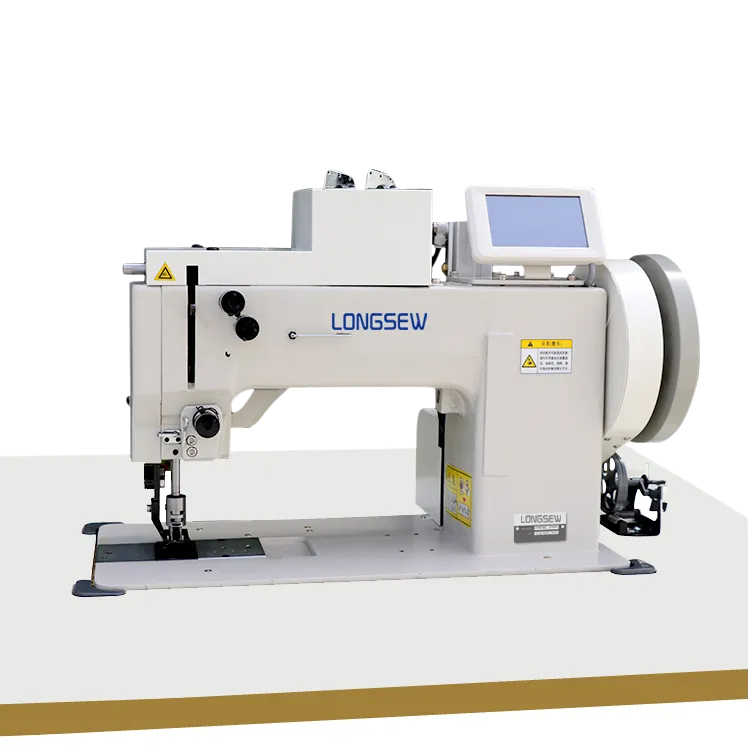Exploring Different Types of Lockstitch Sewing Machines and Their Uses
Types of Lockstitch Sewing Machines
Lockstitch sewing machines are among the most widely used sewing machines in the textile and garment industry. They operate on the principle of creating a stitch by interlocking two threads—the upper thread from the needle and the lower thread from the bobbin. The versatility, durability, and efficiency of lockstitch machines make them an essential tool for a variety of sewing applications. This article explores the different types of lockstitch sewing machines, their features, and their applications.
1. Industrial Lockstitch Sewing Machines
Industrial lockstitch sewing machines are designed for high-speed sewing operations in manufacturing settings. They are built for durability, with robust frames and powerful motors that can handle continuous use. These machines often come with advanced features such as automatic thread trimmers, programmable stitch lengths, and electronic controls. Some common types of industrial lockstitch machines include
- Flatbed Lockstitch Machines These are the most common type, suitable for a wide range of sewing tasks, from basic seams to decorative stitching. They consist of a flat work surface that allows easy manipulation of fabric.
- Cylinder Bed Lockstitch Machines These machines feature a cylindrical arm, making them ideal for sewing tubular items like sleeves, cuffs, and hems. The design allows for easy handling of difficult-to-reach areas, contributing to their popularity in garment manufacturing.
- Post Bed Lockstitch Machines These machines have an upright post that allows for sewing on items with irregular shapes and sizes. They are perfect for working on thick materials or heavy fabrics, as they provide better access and maneuverability.
2. Domestic Lockstitch Sewing Machines
Domestic lockstitch sewing machines are designed for home use, combining ease of operation with various features suited for hobbyists and small-scale sewing projects. These machines are generally lighter and more compact, making them portable and convenient for use in home settings. Types of domestic lockstitch sewing machines include
- Mechanical Lockstitch Machines These are manually operated machines that are simple to use. They are often equipped with a variety of preset stitches and are great for basic sewing tasks like repairs and alterations.
types of lockstitch sewing machine

- Electronic Lockstitch Machines These modern machines come with computerized controls and a touch screen interface, allowing users to easily select stitches, adjust settings, and save customized options. They usually have more stitch patterns and advanced features than mechanical machines, making them more versatile.
- Overlock/Serger Machines Although primarily designed for overlocking seams, many of these machines include lockstitch functionalities. They are crucial for finishing raw edges, preventing fraying, and providing a professional look to garments.
3. Specialized Lockstitch Sewing Machines
Within the realm of lockstitch sewing machines, there are also specialized machines designed for particular tasks. These machines typically offer unique features tailored to specific sewing needs. Some examples include
- Buttonhole Machines These machines are built specifically for creating buttonholes in fabrics. They come with built-in sensors to ensure consistent buttonhole sizes and quality.
- Quilting Lockstitch Machines Designed for quilting enthusiasts, these machines feature wider throat space to accommodate bulky layers of fabric. They often include additional stitch patterns specific to quilting.
- Embroidery Lockstitch Machines These machines combine lockstitch capabilities with embroidery features, enabling users to create complex designs and patterns. They typically have higher stitch speeds and a range of built-in designs.
Conclusion
Lockstitch sewing machines play a vital role in both industrial and domestic sewing applications. Their ability to create strong, durable stitches makes them indispensable in the garment industry, while their versatility in home settings allows hobbyists to tackle a variety of projects. With advancements in technology, various types of lockstitch machines cater to specific needs, ensuring that there is a suitable option for every sewing enthusiast and professional seamster. Whether for mass production or personal use, understanding the different types of lockstitch machines can greatly enhance the sewing experience and outcome.
-
Boost Production Efficiency with a Pattern Sewing MachineNewsAug.29,2025
-
Industrial Excellence with the Best Heavy Duty Sewing MachineNewsAug.29,2025
-
Precision and Power with the Best Pattern Sewing MachineNewsAug.29,2025
-
Reliable Bulk Packaging Starts With the Right FIBC Sewing MachineNewsAug.29,2025
-
Advanced Packaging Solutions: Elevate Productivity with Jumbo Bag Sewing Machine and Industrial Stitching EquipmentNewsAug.29,2025
-
High-Performance Solutions for Bulk Packaging: FIBC Sewing Machine and MoreNewsAug.29,2025
-
Maximize Efficiency with an Industrial Cylinder Arm Sewing MachineNewsAug.28,2025


























